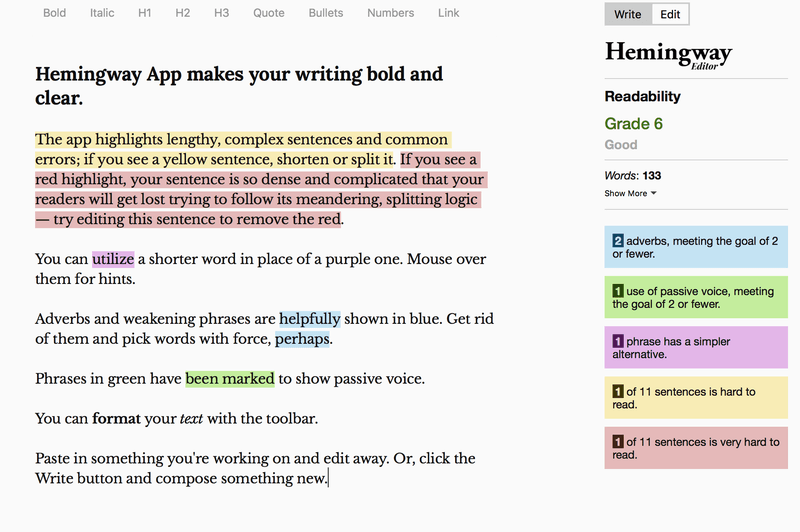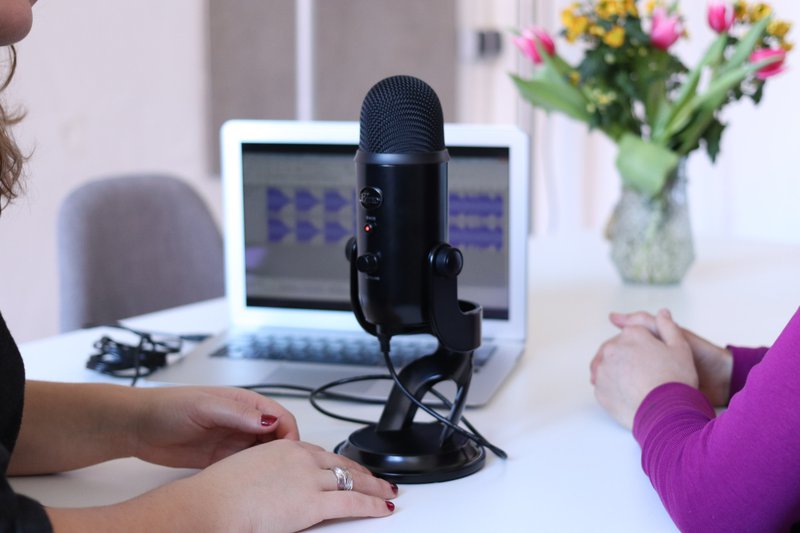Content Creation: How to Create Quality Content Consistently as a Small Business
Content Marketing Masterclass: Part Five
I need to come clean with you about something.
You remember all those benefits of content marketing that we talked about in the first installment of this Masterclass? The boost in SEO rankings, the increased traffic, the better leads? The fact that content helps you build trust and authority?
Well, that was only part of the truth. You see, only valuable, relevant, quality content will do that for you. What’s more, it will only have those benefits if you create it over and over and over again – consistency is key.
As a small team of, well, one, I know that after all that strategizing, brainstorming and planning, actually putting in the effort to create that quality content is bloody hard work. And with the added pressure of having to create something that will have your audience drooling, it can be incredibly intimidating.
What you need is a blueprint for creating quality content – which is exactly what I’ve got lined up for you. So roll up those sleeves and learn how to create great content that will help you build a prosperous brand.
This post is Part Five in a brand spanking new Masterclass Series on Content Marketing. We believe it’s an incredibly important topic – and according to a little survey we did, you do too. Trouble is: there is so much content on content marketing out there (talk about meta) and a lot of the intel is conflicting.
We bring this Masterclass to you in partnership with Anouck Meier, Chief Storytelling Officer at Ampersand. Anouck is a conversion copywriter and a content marketing strategist who has worked with numerous brands, big and small, to help them achieve their business goals through strategic content. Let’s get the story on content straight once and for all in a comprehensive guide. Ready to dive in?
– Jeroen Corthout, Co-Founder Salesflare, an easy-to-use sales CRM for small B2B companies

Quality, not quantity
Anyone can create mediocre content. Some would argue the internet is one huge pile of mediocre content. Creating content that has been published, republished, recycled and repurposed a million times is easy – but it will do nothing for your business.
On the contrary – it could hurt your cause. 😳
I’ve said it before, and I’ll say it again: content marketing is like dating. You never get a second chance to make a first impression. If you’re meeting your in-laws for the first time, you’re not going to show up with a stained sweater, slightly tipsy and only ready to talk about the weather, are you?
Except that’s what so many businesses do when they publish content that is stuffed with keywords and only slightly informative. Content that hasn’t considered the audience’s needs, is outdated, full of spelling or grammar mistakes, inaccurate or plain wrong.
Not only does it turn readers (and potential clients) away, it ticks off the search engines too.

By now it’s a hard rule in content marketing law: only well-crafted, high-quality content can build an audience, trust, and loyalty.
The quality of your content also correlates strongly with how favorably your brand is viewed by and served up in search engines. Investing in quality content is doing both your audience and the search engines a favor.
When you’re putting content out there, be prepared to show up and give it your best shot.
Bring your mother-in-law a box of chocolates or a bottle of wine and come prepared to woo her with your witty remarks and thoughtful compliments. You’ll be melting hearts (and opening customers’ wallets) in no time. 😍
But hang on – what is quality content?
OK, so great content helps you earn the attention of the people who need your product or service. But how do you define “quality” content?
Does it boil down to metrics like “Time On Site” or bounce rate? The number of backlinks your blogpost acquires over time? The extent to which it goes “viral” on social media?
You could probably make an argument for all those elements (and a lot of marketers do). The problem is: these are all elements that are appraised only after you create and share your content. They’re hardly helpful while you’re down in the trenches, creating content.
What you need is a way of knowing that the content you’re creating for your business will be effective in terms of building authority and winning the trust of customers.
Over the years, while working with numerous entrepreneurs, companies and organisations in developing content that attracts a loyal audience, I’ve been able to distill the characteristics of content that works – and content that falls flat.
These are the four rules I swear by for creating quality content.
Rule #1: Establish Authority
If you want to stand out with your content and create a competitive advantage, you should create content you’re uniquely qualified to make. Write about those things you’re an absolute expert in and dare to dive deep – don’t just scratch the surface.
Make clear, compelling points and show readers you know what you’re talking about.
By the way: your content creation should showcase your expertise, but that doesn’t mean you have to know everything about anything. Reach out to experts and ask them to write guest blogs (like this one!).
Rule #2: Be Accurate
You know what’s even worse than mediocre content? Fake news.
Now, I’m not suggesting that all content creators who are putting out mediocre content are injecting fake facts in their content intentionally (although, unfortunately, some definitely do and they’re often paid to do so). However, some people just refuse to do their homework.
If you’re going to create content that actually gets read, you definitely should!
- Research whatever you’re writing about.
- Use reliable sources.
- Check if your information is factual, backed by data and/or researched.
- An opinion is not a fact.
- And everyone is not an expert.

Rule #3: Make it Relevant
Remember what I said about the cardinal sin of content marketing?
Avoid the trap of creating egocentric content and focus solely on what is meaningful and relevant to your ideal reader. As you’re creating content, ask yourself:
- How helpful is this for my audience?
- How strongly does it apply to where they’re currently at?
- Am I providing clear guidance on the steps they need to take to reach their goal or solve their problem?
- Am I answering their questions better and differently than everyone else?
- Am I showing them I know exactly what they need?
Rule #4: Help them Take Action
Your audience is hungry for your expert vision – but they’re not looking for an encyclopedia on any particular subject. They just want to know what to do.
Often times, they’re looking for just enough information to help them take the next step or make a decision. Help them take action toward their goals: break it down for them in bite-sized chunks and provide concrete, actionable tips and advice.
Content Creation Process On Fleek
Now that you know what to aim for with your content, let’s take the guesswork out of the actual content creation process.
1. Writing
I’m going to talk about the writing process because … well, that’s what I do most of the time. Refer to the section on content formats below for other types of content like podcasts and videos.
Whatever it is, the creation process follows some pretty similar rules:
- Create for one reader and one reader only. Don’t try to write for anyone who may just be interested. This will force you to focus on your ideal reader, use their language and tailor it to their specific needs.
- Same goes for what you’re writing about: stick to one core message or idea. Avoid going on tangents or trying to explain a plethora of ideas in a single piece of content.
- Put the benefit of your content where it can’t be ignored: the “what’s in it for me” should be immediately obvious from reading the title (and the intro).
- Make your content easy to consume: don’t make your reader hunt down the information they’re looking for. Use titles, subtitles, short paragraphs, bullets,… to structure your writing and guide them through it.
- Clever over clear. You want your reader to relate to you and get value from your content. What you don’t want is overwhelming them with jargon or overly complicated concepts. Don’t make them work hard to understand what you’re saying (because if your message isn’t immediately obvious, they’ll click away in a heartbeat).

Need more guidance on actually writing your content? In Part 6 of this Masterclass, we’ll take a deep dive into writing copy.
2. SEO Research
SEO has come a long way – search engines are doing a much better job at understanding and processing how we communicate.
They’re actually starting to speak human – which is great news for every content creator who’s focusing on good writing (rather than on stuffing their content with keywords and sounding like a robot).
Good writing is key but that is not to say that including a couple of keywords in strategic places won’t help you rank well. Which means more eyeballs on your content. 🤓
SEO research will also help you determine whether a specific topic/keyword is worth investing in, by showing you the search volume and how hard it is to compete for that specific keyword.
This is what a basic SEO research process looks like:
- Jot down some questions your ideal reader might have based on their struggles and their goals.
- Perform some keyword research around those questions. Use keyword research tools, like Google Keyword Planner, KWfinder, SEMRush, Moz Keyword Explorer or Ahrefs. Type your keyword into Google and take note of the auto-filled queries. Or simply scroll to the bottom of the page and check out the related searches section on search engine results pages (SERPs).
- You’re looking for keywords that have significant monthly search volume (MSV) and a reasonable keyword difficulty, corresponding to your domain authority. If you haven’t been blogging for long and your domain authority is still low, the best thing to do is to target long-tail, low-volume keywords (200-1000 MSV) with minimal keyword difficulty (<30). This will give you a good chance at ranking for keywords and getting your content in front of your audience.
So once you have your first draft ready, check that you’ve covered the following:
- Use your keyword in the title
- Include your keyword or keyword phrase in an H2
- Make sure the keyword appears at least once in the body of the post (but don’t overdo it!)
- Use image alt text (including the keyword when appropriate)
And that’s all really – it doesn’t have to be more complicated than that.
3. Editing
Before editing your piece, it’s always a good idea to walk away. Just let it sit there for a while, let it marinate and come back to it with clean eyes.
Release attachment and forget that it’s actually you who has written the piece. As an editor, you should have no problem editing the piece to produce a more coherent and interesting post.
If you cannot, as Stephen King would say, kill your darlings, consider having a team member or an external editor review your work.
When you finally return to your draft, focus on readability, SEO, calls to action, links, spelling and grammar. Some tools that will help you cut down on your editing time are Grammarly and Hemingway Editor.

Look out for active voice, clear language, short sentences and paragraphs and plenty of whitespace. Remember to review past content for opportunities to link to your post once it’s published.
While your content is still fresh in your mind, write some posts for social media promotion and for your email newsletter.
Add images or at least an effective featured image: adding one has been shown to give you more clicks, more favorites, and more social shares. Check out sites like Unsplash or Pexels for photos and then use a tool like Canva or Visme to add a finishing touch. If you need more customized or unique images for your project, you can use an image generator like Picsart, which can help you create images with ease.
4. Publishing
Isn’t publishing just hitting a button and being done with it? Yes and no. If you’re just starting out, it can be a matter of uploading your piece immediately. Or, you can try to maximize its impact by scheduling it for an optimal time.
If you’ve been at it for a while and you’re committed to a regular publishing schedule, your audience will expect to see your posts coming out at specific times – you should definitely try to stick to it!
If you have a lot of content to publish, it’s probably a good idea to invest in a content planning tool, as we’ve discussed in part 4 of this Masterclass.
Or if you want to automate and streamline the publishing process, opt for a tool like Story Chief (that’s what we used to write, publish and distribute this post). Some companies prefer to use a CMS platform that can store, manage, and publish bulk content like blogs, videos, and website landing pages.
Don’t forget to link to the blog post from past content and to schedule your social media content too.
Finally, review analytics over the next couple of days, after a week and after a couple of weeks to evaluate performance.
Creating Other Content Formats
Blog posts are a great place to start with your content marketing, as they have a very low barrier to entry. You don’t need a designer or any special equipment. You hardly need any technical knowledge. Just start writing and you’re good to go.
A lot of the guidelines for written content apply to other types of content too. Let’s take a look at the specifics of putting together some other popular content formats: videos and podcasts.
Creating Videos
According to recent research, 51% of marketing professionals worldwide name video as the type of content with the best ROI. Social video generates 1200% more shares than text and images combined.
However, if you don’t consider yourself the next Casey Neistat or if you don’t have a dedicated video team like Gary V, the idea of producing video may seem overwhelming and intimidating.
But rest assured – you don’t need (a lot of) specialized gear or a studio. Lord knows those cat videos that draw millions of viewers haven’t exactly been through professional production processes. 😼 If you can tell a compelling story, it doesn’t matter if you shoot it on your iPhone or a professional camera. There are even fully customizable after effects templates that you could try out!
You don’t even need a script – but you do need a plan: just think about what you’re going to say and prepare a few bullet points to structure your video. Don’t forget to include a call to action at the end!
Finally, add captions , as the majority of videos are watched without sound.
Producing Podcasts
Podcasts are still hot and happening. Serving up your content in an audio format will attract a part of your audience that may prefer listening to content over reading lengthy blog posts.
You can start producing your own podcast without putting in too much effort.
- Gather your gear. A basic podcasting setup consists of a microphone and software for recording your voice. I recommend using an external USB mic (versus the built-in mic of your computer), audio interface and professional recording software.
- Find your guests or outline your own episodes. Instead of writing an outline for a blog, you’re now making outlines per podcast episode. If you’re doing an interview-style show, gather a list of guests and put together a template outreach email.
- Edit your podcast. Full transparency – I’m in my third season of podcasting now and I still haven’t edited a single episode. Luckily, there are tons of affordable options for hiring a sound engineer or podcast producer to stitch your episodes together. All you really need is 4 files: your main audio file or interview, an intro, outro, and a jingle.
- Go out and be heard. You now have a podcast episode that’s ready to be uploaded to iTunes, Spotify, Stitcher, SoundCloud, or anywhere else and promoted alongside the rest of your content.

Stay consistent
Content creation is a marathon – not a sprint. 🏃♀️
To reap the benefits of content marketing, stay consistent in your efforts, commit to your content calendar and content creation plan.
If you’re a small team, get organized so you’ll work as effectively as possible.
Batch create your content creation to be more productive and get help where needed: hire a content manager, an editor or a copywriter. Team up with partners and get guest bloggers to contribute. If writing feels like a strain, leverage a transcription service and speak your content (or ask your assistant to interview you and write you a recap).
Creating a sustainable content creation process that you can stick to over time requires a lot of work and effort. Hey – if it was easy, everyone would do it. But if you get it right, you’ll be well ahead of the pack.
What does your content creation process look like? And are you being consistent? Let us know in the comments.
And don’t forget to check back next week for Part Six of our Content Marketing Masterclass about writing copy!

We hope you liked this post. If you did, spread the word!
👉 You can follow @salesflare on Twitter, Facebook and LinkedIn.
if(window.strchfSettings === undefined) window.strchfSettings = {}; window.strchfSettings.stats = {url: “https://salesflare.storychief.io/content-creation?id=1166271153&type=2”,title: “Content Creation: How to Create Quality Content Consistently as a Small Business”,id: “b4bf56dd-9b24-4318-a472-b8522fe85e05”}; (function(d, s, id) { var js, sjs = d.getElementsByTagName(s)[0]; if (d.getElementById(id)) {window.strchf.update(); return;} js = d.createElement(s); js.id = id; js.src = “https://d37oebn0w9ir6a.cloudfront.net/scripts/v0/strchf.js”; js.async = true; sjs.parentNode.insertBefore(js, sjs); }(document, ‘script’, ‘storychief-jssdk’))- Measuring Content Marketing ROI: Show Me The Money - October 10, 2019
- Repurposing Content: 4 Easy Ways to Get More Out of Your Content - October 3, 2019
- The Ten Commandments of Effective Content Distribution - September 26, 2019
